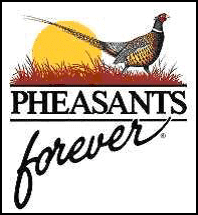PF working with landowners to strengthen upland habitat in eastern South Dakota.

Aberdeen, S.D. –-(Ammoland.com)- More than 70,000 acres are now enrolled in South Dakota’s Conservation Reserve Enhancement Program (CREP) along the state’s James River watershed.
All these acres – which have been enrolled with the help of Pheasants Forever Farm Bill Biologists – are private lands that will be open to pheasant hunters.
South Dakota’s general pheasant season opens Saturday, Oct. 20th.
While South Dakota’s annual pheasant brood count indicated an 18 percent increase in the state’s pheasant population, pheasant abundance from the James River valley and eastward increased by 40 to 70 percent.
“Pheasant numbers can rebound in a big way if there’s a strong upland habitat base,” says Matt Morlock, a Pheasants Forever Farm Bill Biologist based out of Brookings, South Dakota,“These CREP ‘walk-in’ areas exist on approximately 500 farms, which shows there’s still a strong conservation ethic in South Dakota’s pheasant country.”

Seven of Pheasants Forever’s eight South Dakota Farm Bill Biologists are located in eastern South Dakota; the positions are thanks to Pheasants Forever’s unique partnership with the U.S. Department of Agriculture (USDA).
Ultimately, the goal of South Dakota’s CREP is to enroll up to 100,000 acres of eligible agricultural land located in the James River watershed, but USDA’s authority to deliver CREP and other conservation programs has expired and is dependent on a new federal Farm Bill to continue.
All CREP walk-in areas are open year round to public hunting and fishing access. CREP lands are owned by private individuals who have enrolled them in the Conservation Reserve Program (CRP) and signed a lease agreement with South Dakota Department of Game, Fish and Parks to provide public hunting and fishing access. CREP areas can be located via South Dakota’s Hunting Atlas.
Pheasants Forever Farm Bill Biologists are located in local USDA service centers in priority habitat areas throughout the pheasant range, including South Dakota. Farm Bill Biologists educate farmers and landowners about the benefits of conservation programs, such as CREP, as well as assist those farmers and landowners after programs have been implemented.
Pheasants Forever, including its quail conservation division, Quail Forever, is the nation’s largest nonprofit organization dedicated to upland habitat conservation. Pheasants Forever and Quail Forever have more than 130,000 members and 700 local chapters across the United States and Canada. Chapters are empowered to determine how 100 percent of their locally raised conservation funds are spent, the only national conservation organization that operates through this truly grassroots structure.
Pheasants Forever is dedicated to the conservation of pheasants, quail and other wildlife through habitat improvements, public awareness, education and land management policies and programs.
